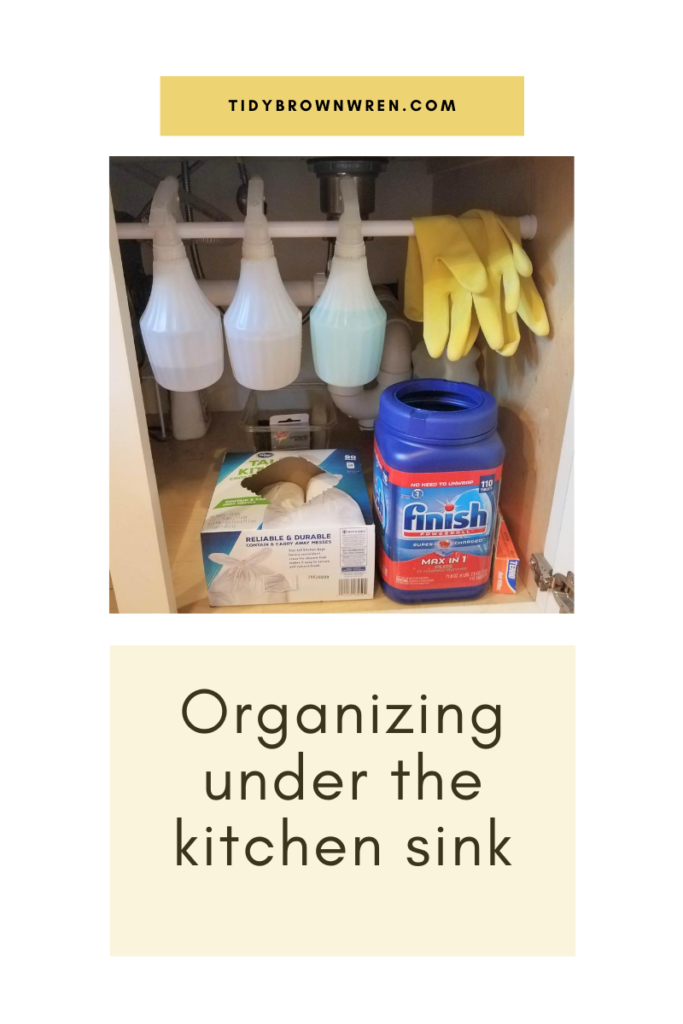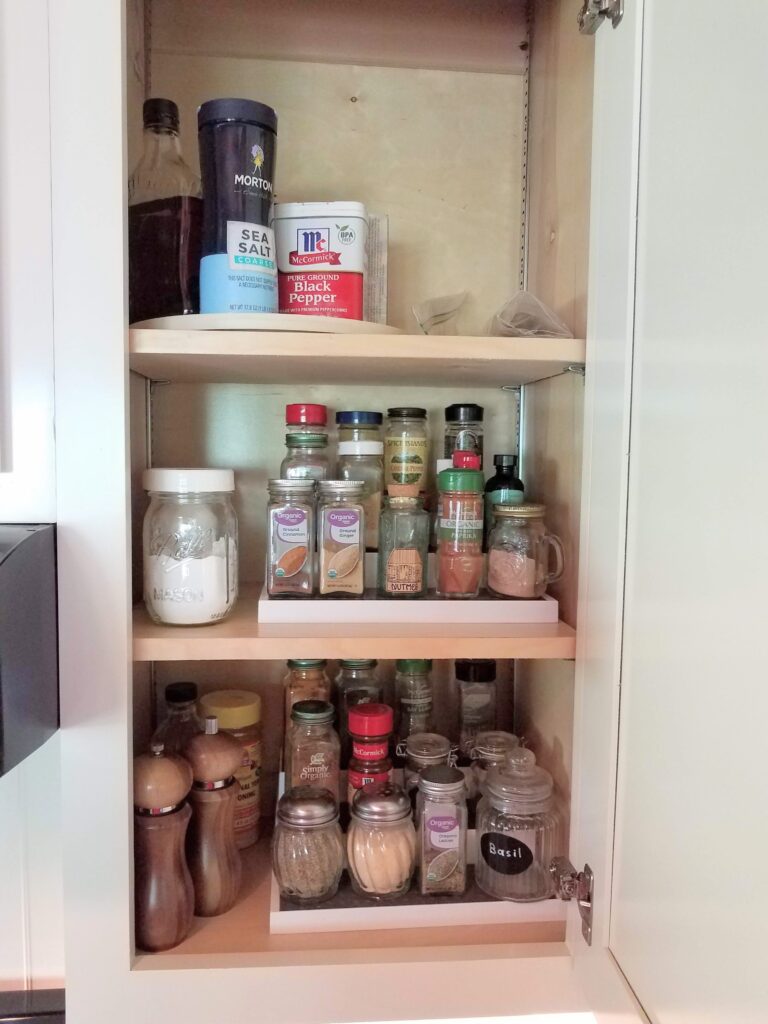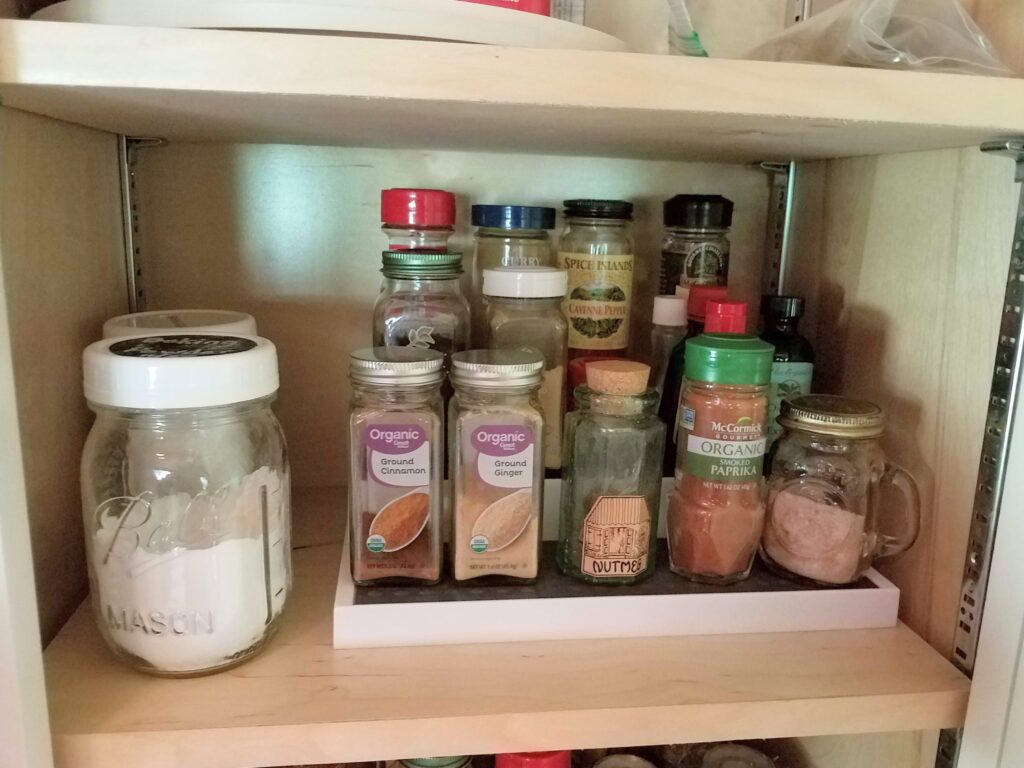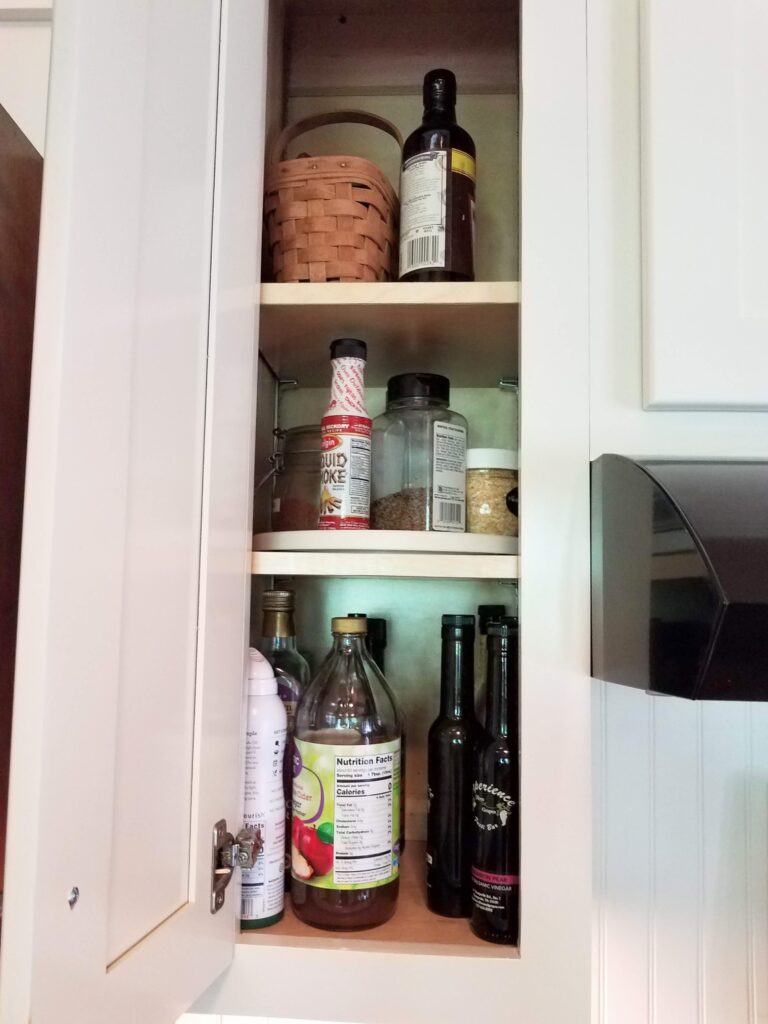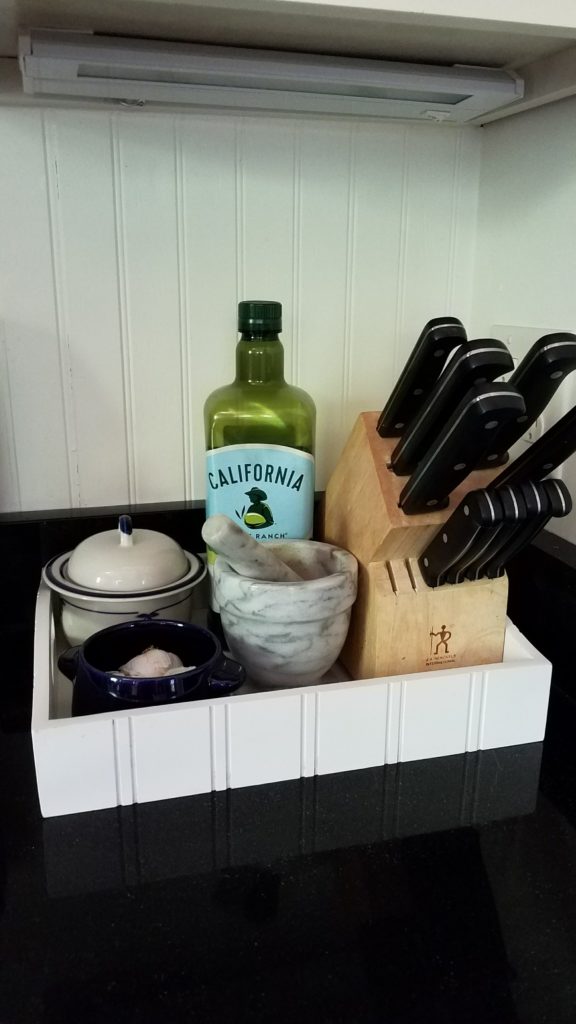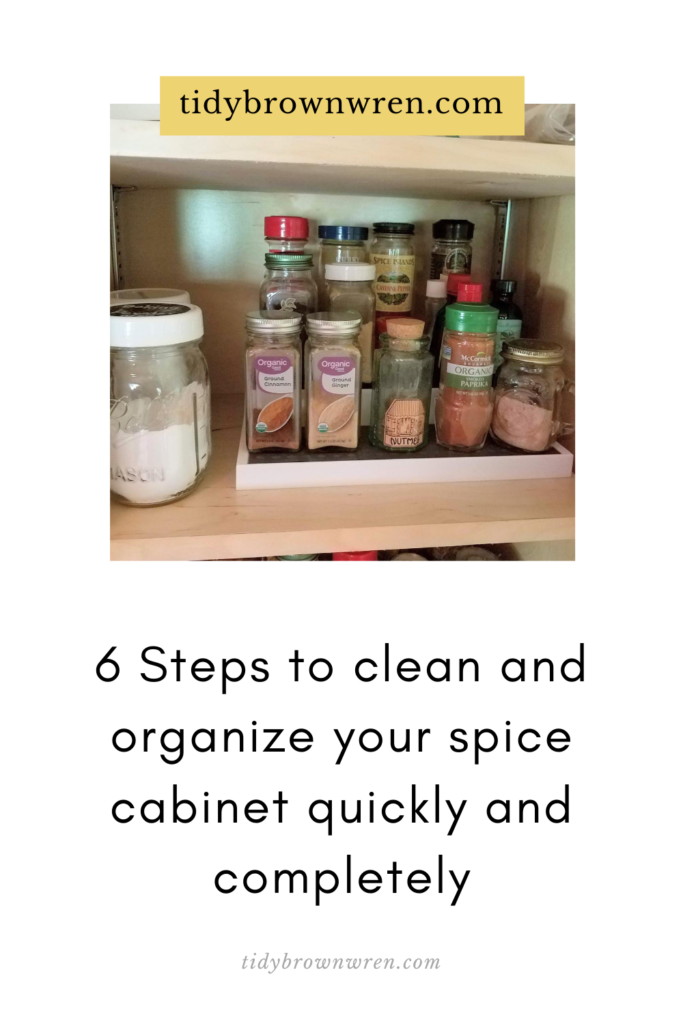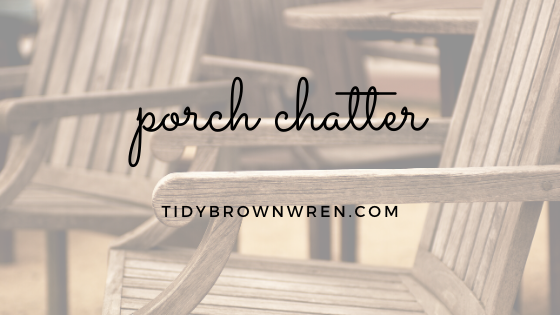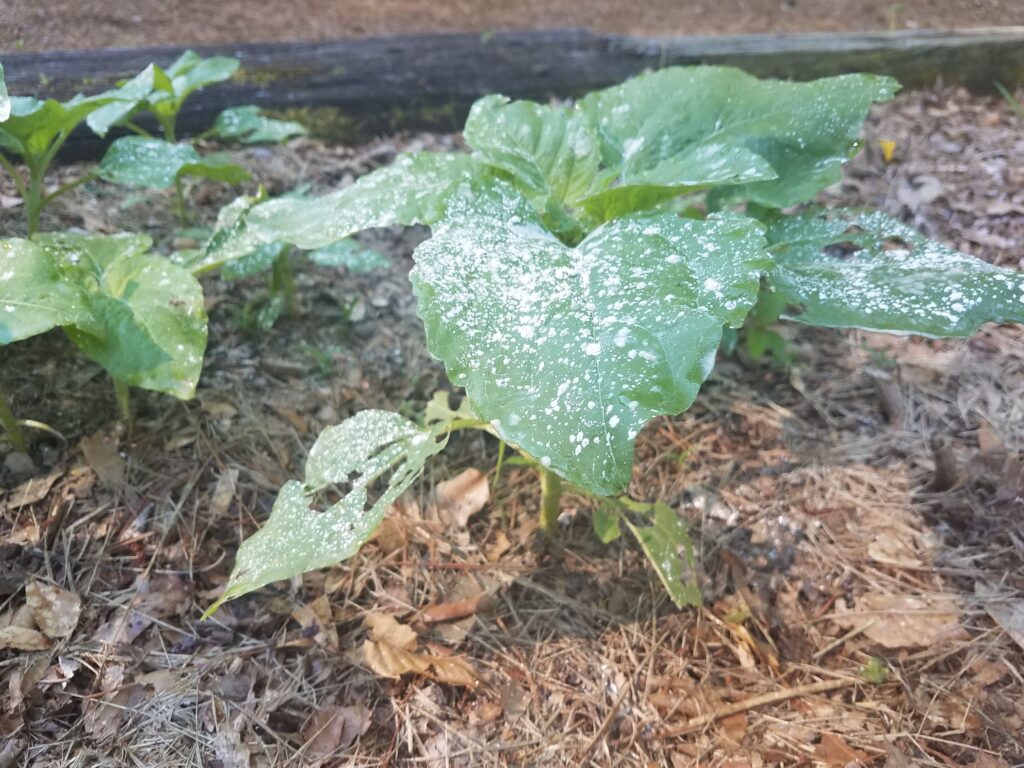The cabinet under the kitchen sink is a workhorse at our house, so organizing under the kitchen sink is something I take care of every few months.
E-zine articles and books about home organization might lead you to believe that a well-organized system should not have to be tweaked very often, but that is true only of areas that never change. The area under the kitchen sink (at least at our house) constantly has items coming in and going out. Sometimes it is seasonal (ant bait) and sometimes it is temporary (a replacement bottle of dish detergent) and sometimes it is a bad choice (extra rags because I’m too lazy to go out to the garage to put them away).
In this case, I was able to organize this kitchen sink cabinet re-using items I already had except for one item.
Here is what my kitchen sink cabinet can start to look like if I don’t tweak it regularly:
This post may contain affiliate links. Please see my disclosure policy here.
Step One: Clear out
The best way to start organizing a space like this is just to take every item out of the cabinet and group like things together.
Step Two: Purge
Next, go through each grouping and get rid of items you don’t need or use. Sometimes you might need to condense bottles together (like 2 partial bottles of window cleaner condensed into one).
The first area I tackled this day was the before-mentioned abundance of rags. Too many is too many.
If you have a tendency to keep too many rags, think about what you use them for. I’ve foolishly kept some rags that weren’t even good rags. They didn’t wipe up liquid well or they left lint behind. It’s ok to trash rags that aren’t worth the space they are taking up.
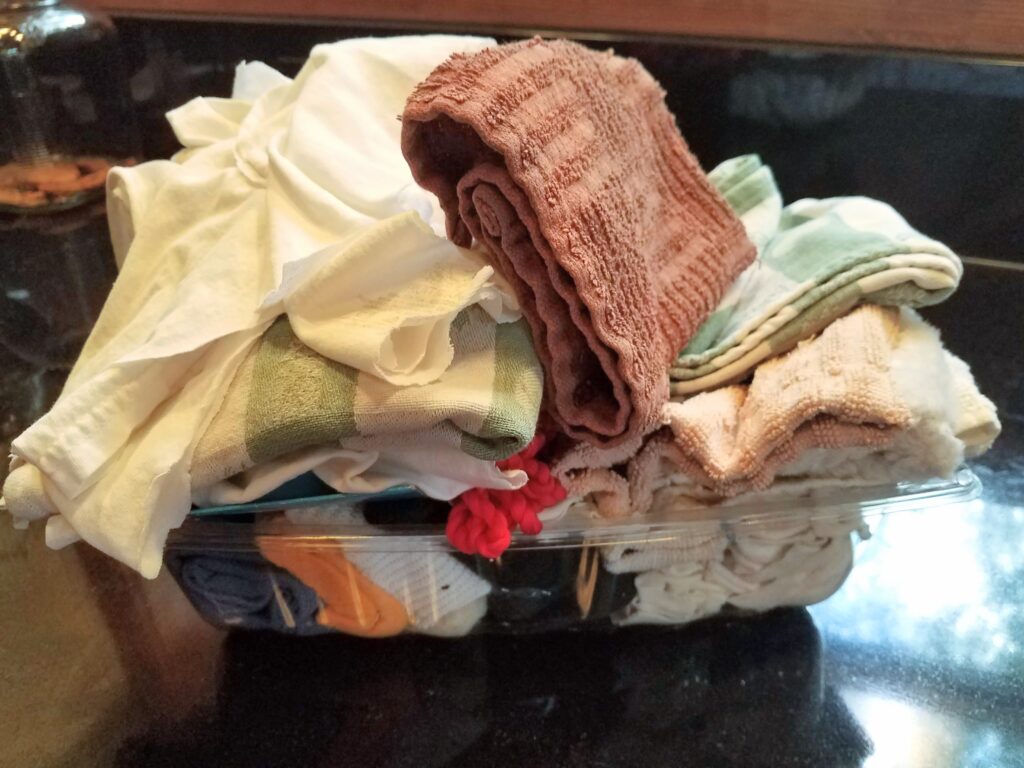
Another tip for cleaning rags or supplies is to keep them in a container. It keeps them from sprawling around in your cabinet and it also works as a boundary line for how many items to keep. I pared down my rags to only “good” rags that would fit in my recycled container.
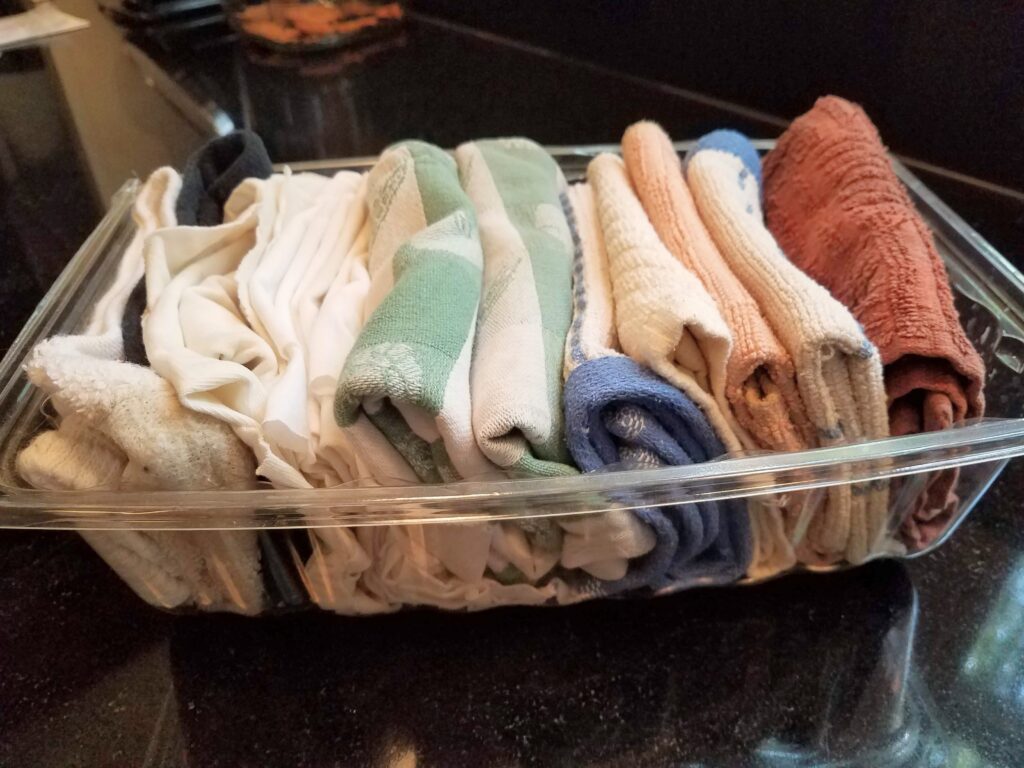
Step three: Corral small items
The next area I worked on was the small items that tend to get lost in a large cabinet. I corraled them all in a basket I had. Why, yes, I am using a Longaberger basket under my sink. It is sturdy, easy to clean, rectangular, and has a handle- making it the perfect container for under the sink.
I added some smaller containers inside the basket to separate types of items. One holds my metal cleaners and one holds my scrubbers. Extra sponges and brushes I use frequently, fill in around the sides.
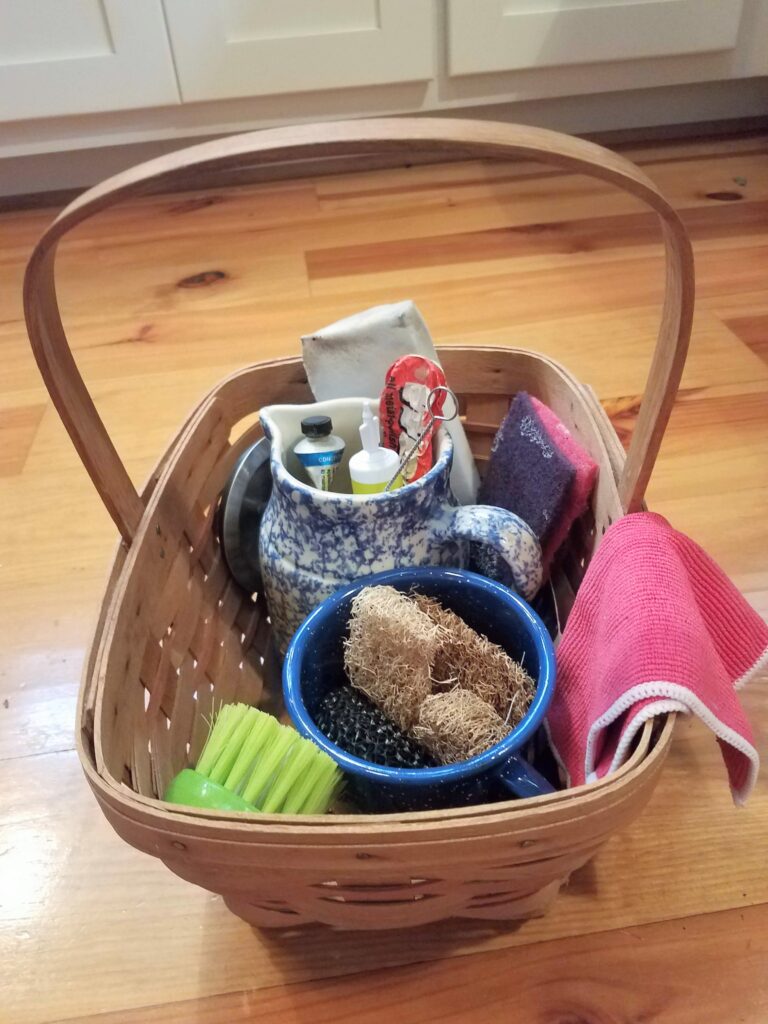
Step four: Think vertical
My favorite holder under the sink is the only thing I spent money on. I bought a replacement tension curtain rod to hold my squirt bottles. Here is one like I bought. I’ve learned from experience to buy coated rods and ones that are not too thick (or your bottles won’t fit over them).
It took me a little while to play around with the height, making sure that it wasn’t too high to be inconvenient to replace the bottles, nor too low to interfere with supplies stored on the bottom of the cabinet.
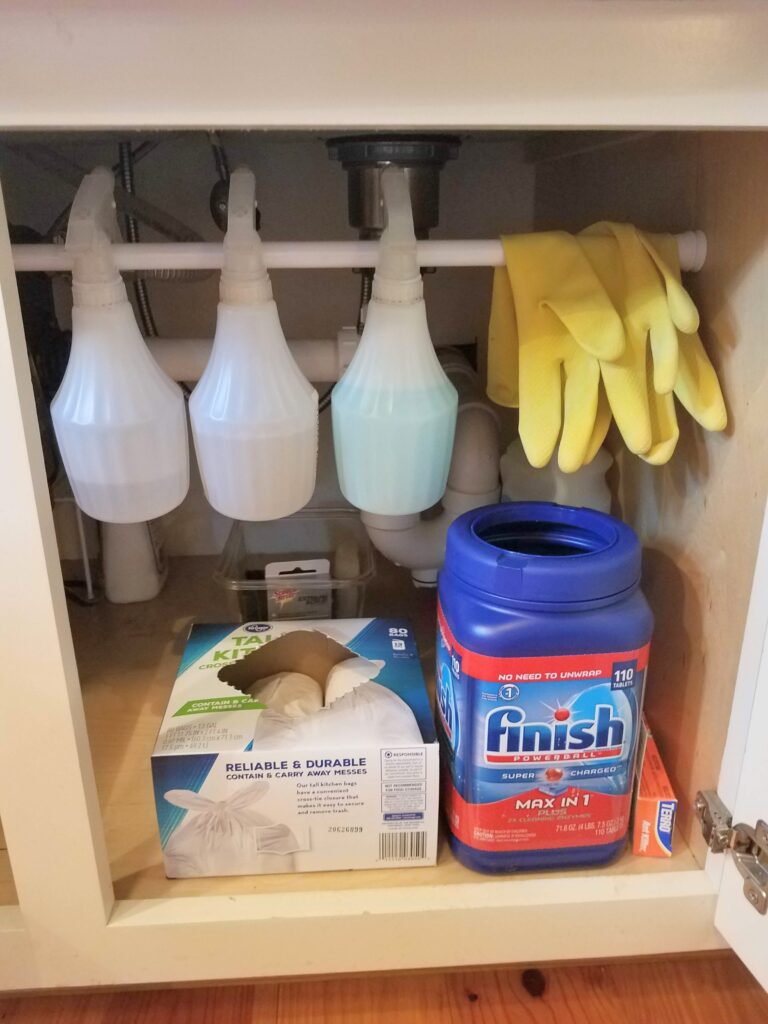
Step five: Take it for a spin
The last area I tidied up was a lazy-susan I keep bottles on that won’t be stored on the curtain rod. These happen to be cleaning items I don’t really use as often as the spray bottles, but I want them close at hand. I filled a small jar with plant foot spikes to keep them together and to keep them from absorbing moisture from the humid air. If you purchase a lazy-susan, be sure to measure first so you know it will fit.
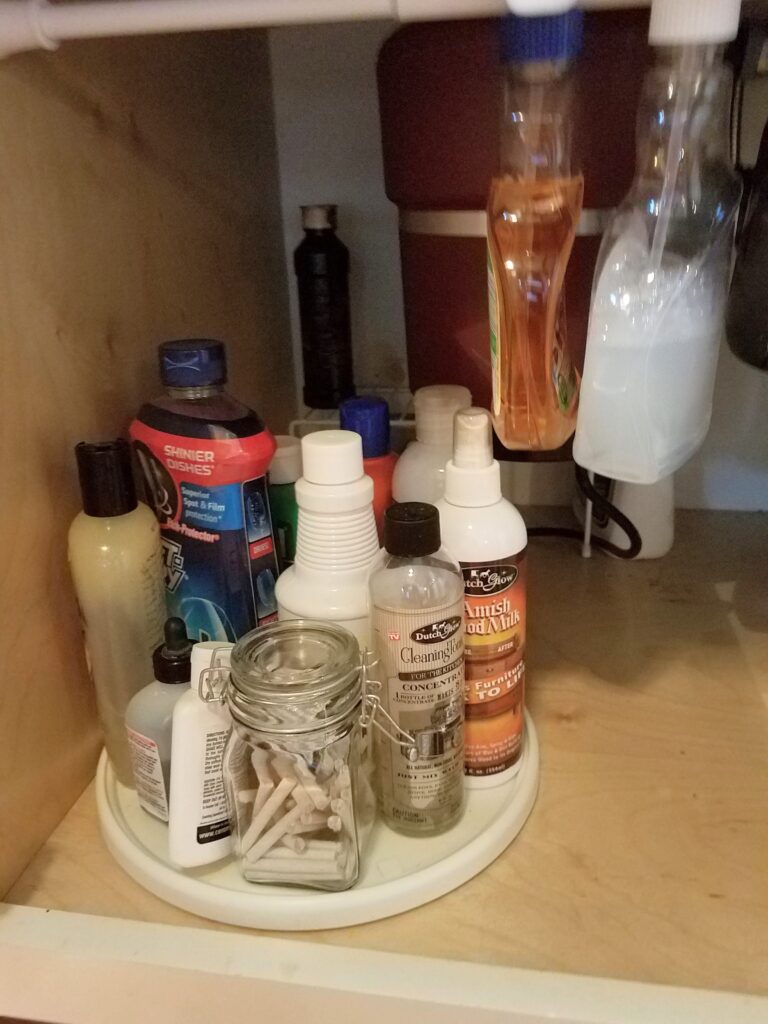
Step six: Remember the zones
Behind the lazy susan, I have a plastic-coated wire shelf that I consider my “C” zone.
This blog post about 5 rules for an organized home talks all about zones in your home. “A” zone is items you use every day and they should be in front or very easily accessible. “B” zone items are used less often and are stored slightly higher, lower, or behind “A” zone items. “C” zone items are used less often and should be on high shelves, in the very back of cabinets or drawers, or underneath items used more often.
Why use a shelf instead of just storing it on the cabinet floor? Well, I like to keep the items elevated so I can see them better and it makes them easier to grab. My “C” cleaning items are Old English products (which I use every once in a while, Quick Shine floor finish (which I use once a year), and granite polish (which I use 2-3 times a year).
Well, I just noticed my rag container wasn’t in the cabinet when I took these photos. I store the container under the “C” shelf. My Norwex cloths are mainly what I clean with, so I consider my other rags to be “C” items. Norwex cloths are anti-microbial, washable, and sturdy. I also bought their masks and I’m pretty happy with them because I can actually breathe through them.
FYI: I “hide” my Norwex cloths in another area because a man I love very much tends to grab things like Norwex rags, Pampered Chef brushes, and my favorite turkey baster for automotive purposes! Can I hear a witness?
